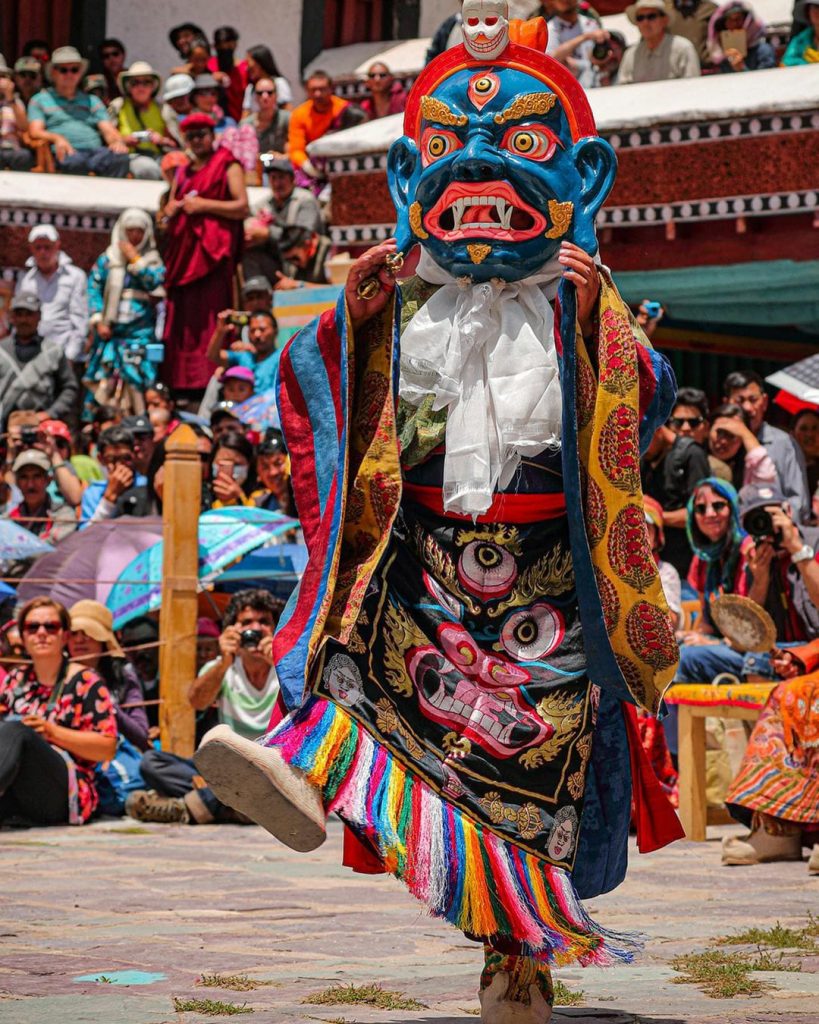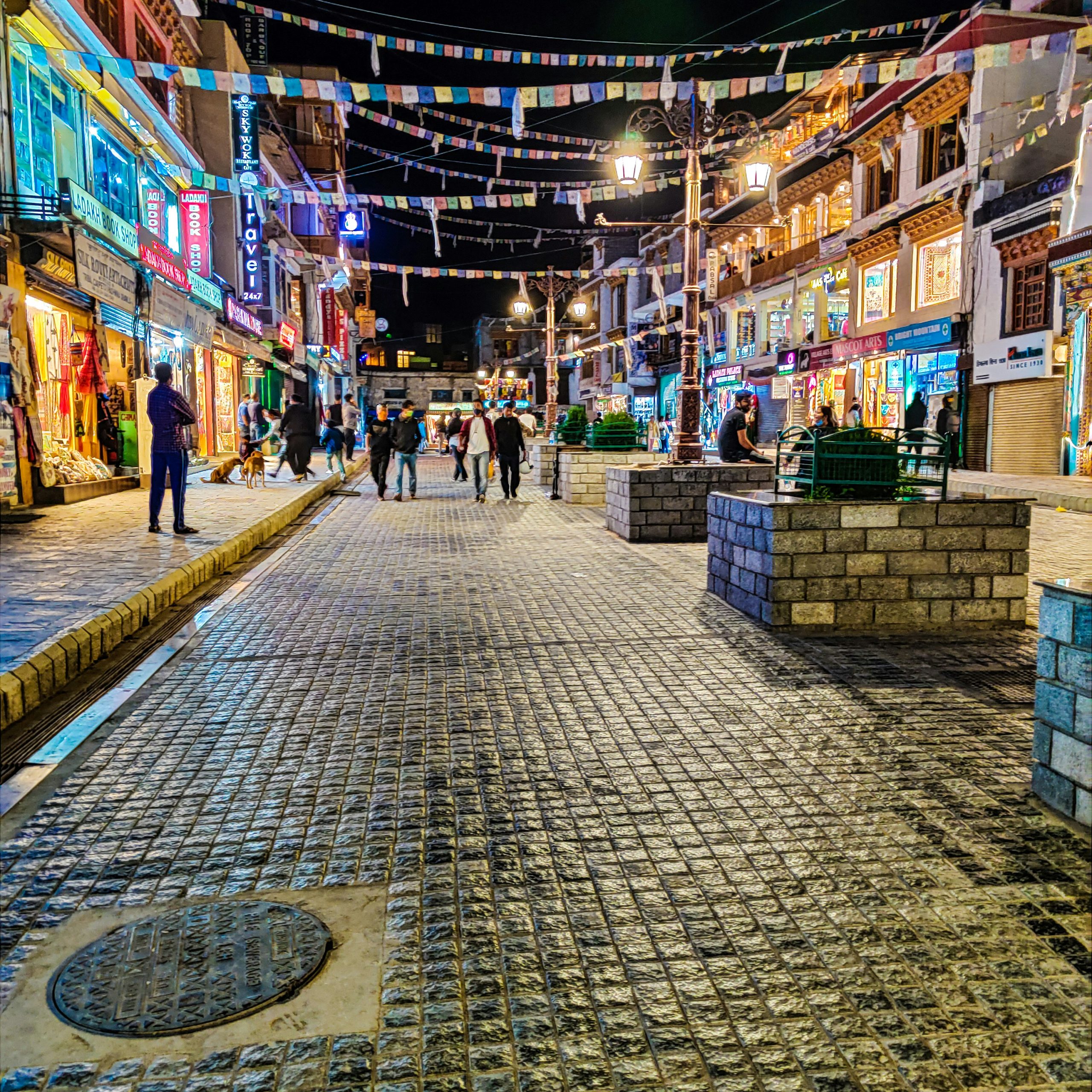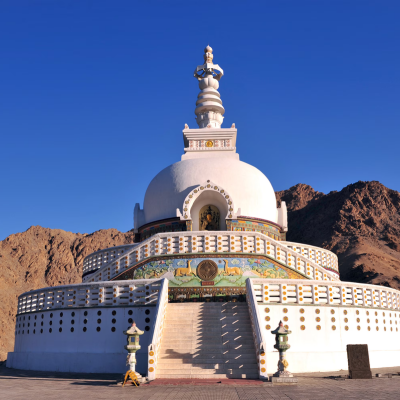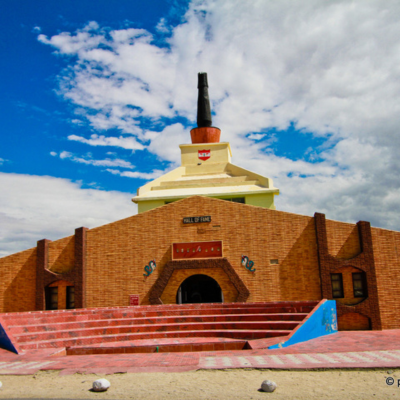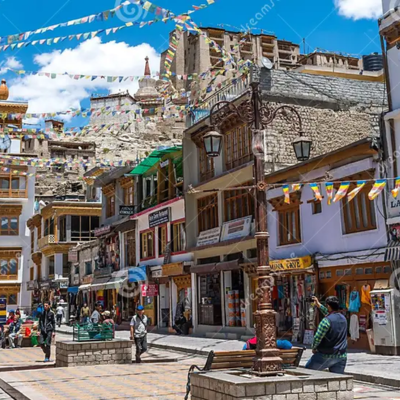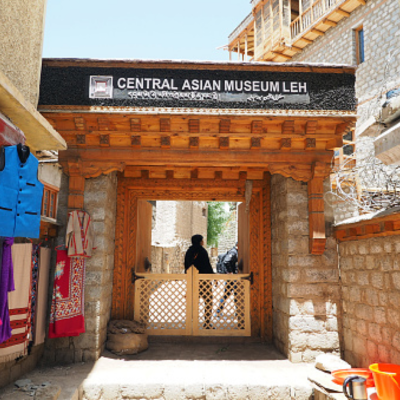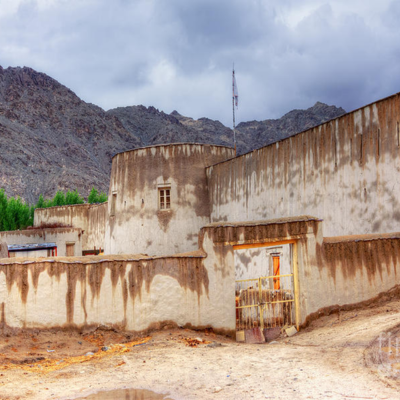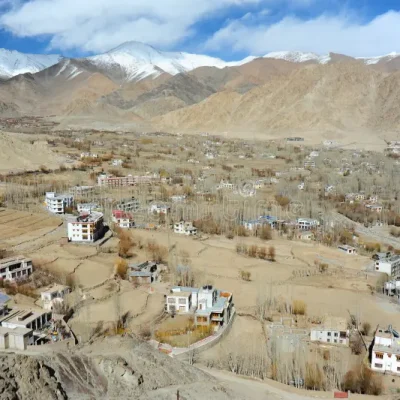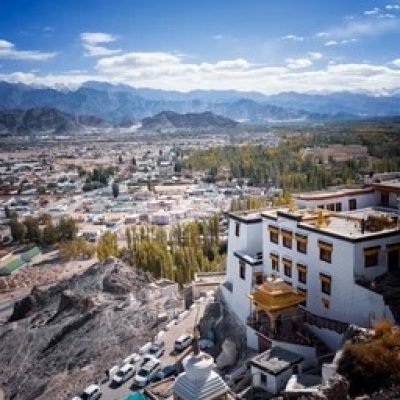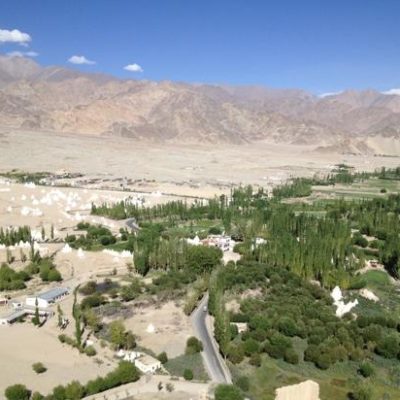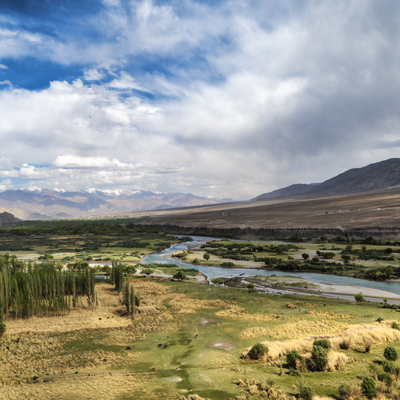Tingmosgang holds immense historical importance as it was founded by King Dragpa Bumde, a descendant of the Namgyal dynasty. It served as a strategic and administrative center of Ladakh and was known for its stronghold during political divisions. The 1684 Treaty of Tingmosgang between Ladakh and Tibet was signed here, cementing its significance in Ladakh’s political history. The region remains a spiritual center for the Gelugpa sect of Tibetan Buddhism.
Architecture
The palace complex of Tingmosgang sits atop a hill, blending seamlessly with its rocky terrain. Built with traditional Ladakhi materials like rammed earth, stone, and timber, the architecture includes fortified walls, prayer halls, and watchtowers. The adjacent monastery features typical Tibetan Buddhist architecture, with whitewashed stupas, colorful frescoes, prayer wheels, and a main assembly hall (du-khang). Its elevated position offers commanding views of the valley and surrounding villages.
